2020 Wiltshire (2) formation
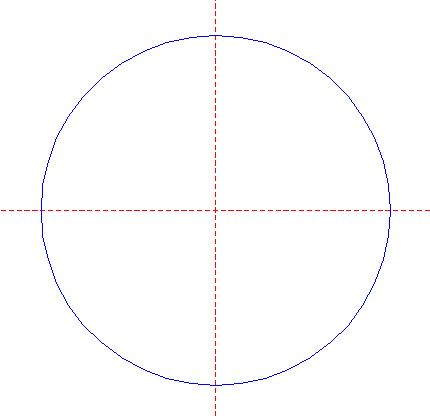
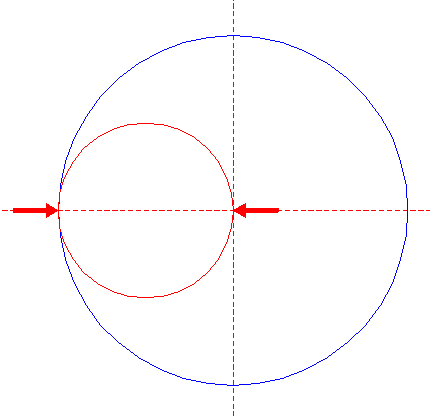
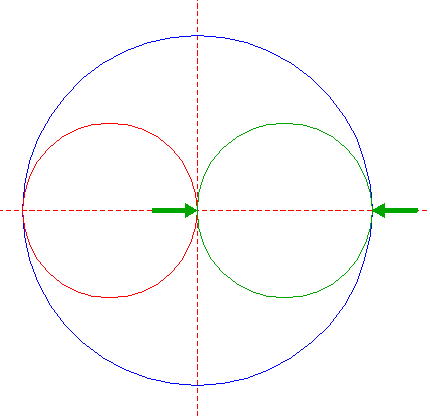
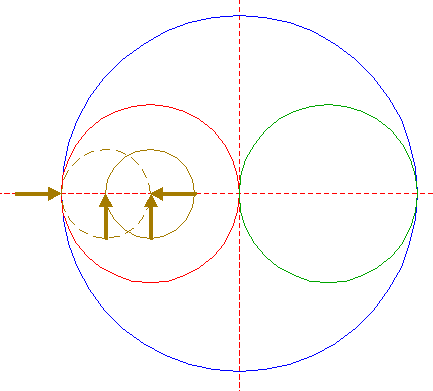
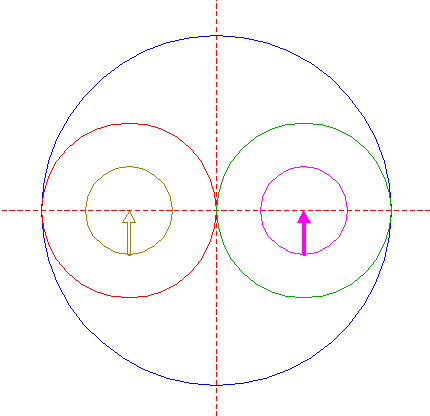
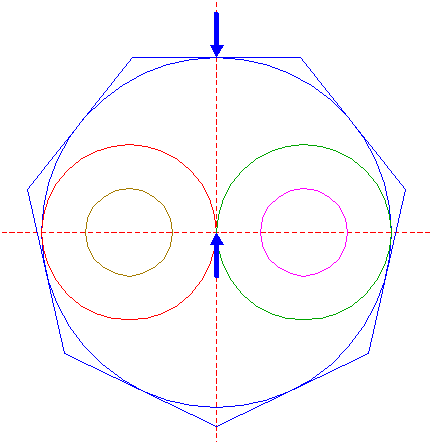
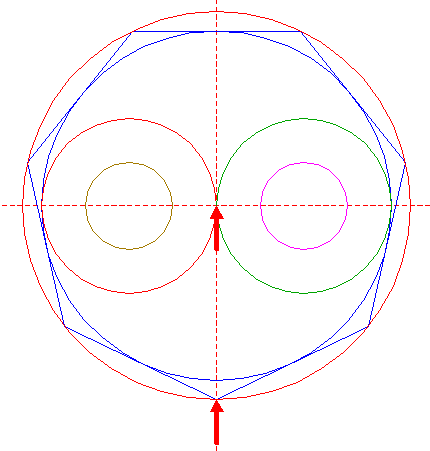
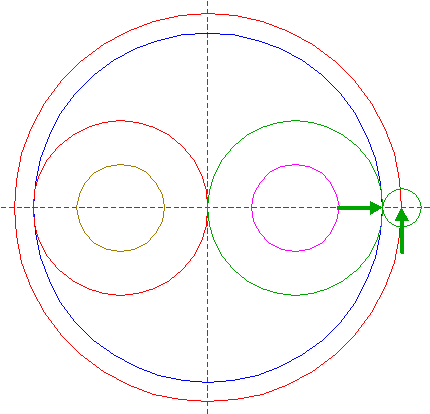
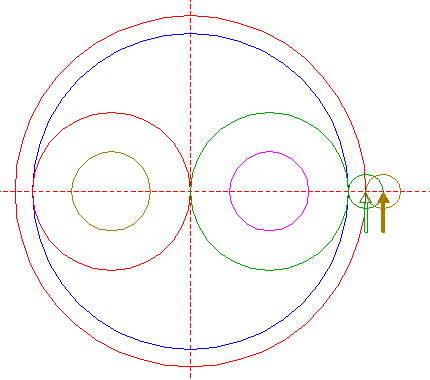
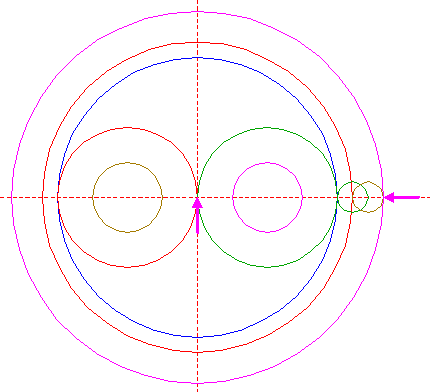
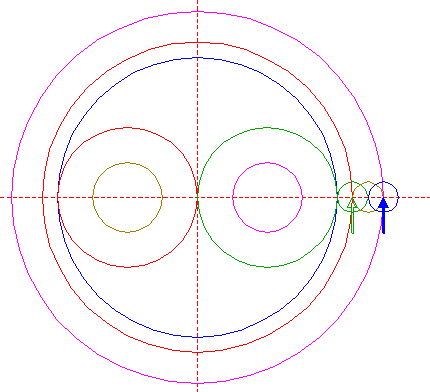
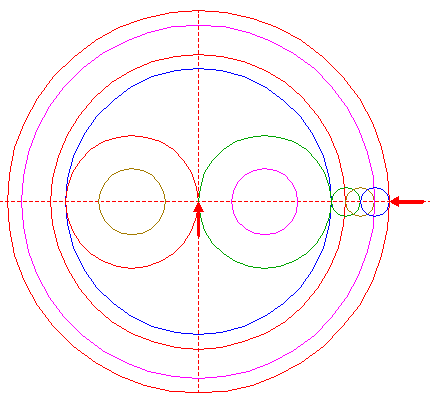
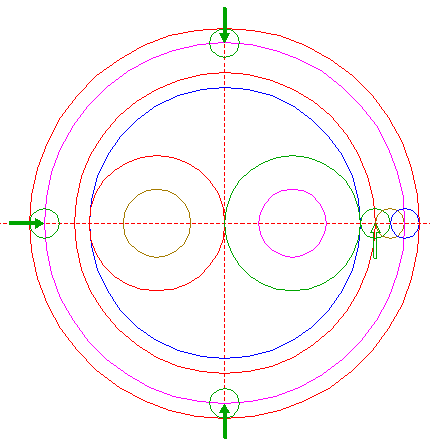
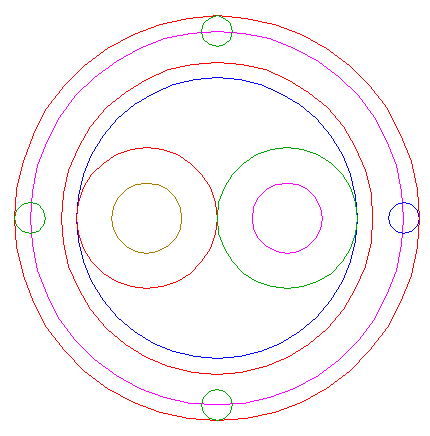



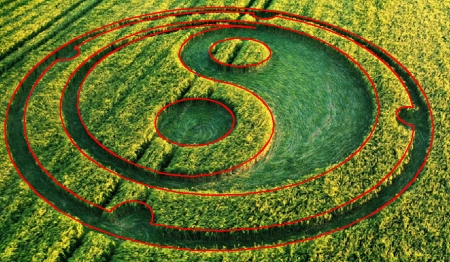
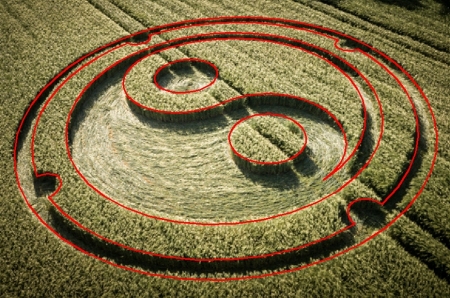
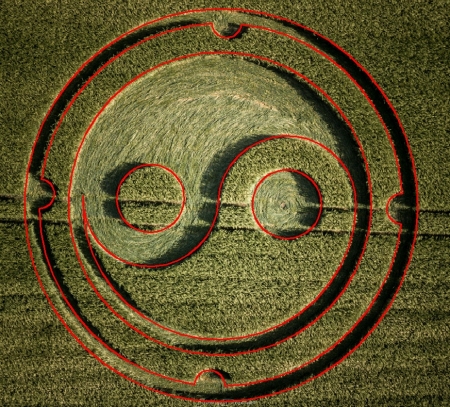
|
Reconstruction of the 2020 Wiltshire (2) formation | ||
| 1. | 
| Draw a circle. Draw and extend the horizontal and vertical centerlines. |
| 2. | 
| Construct a "two-points" circle (defined by the two end-points of a centerline) between the center of circle 1 and its lefthand intersection with the horizontal centerline. |
| 3. | 
| Construct a "two-points" circle between the center of circle 1 and its righthand intersection with the horizontal centerline. |
| 4. | 
| Construct a "two-points" circle between the center of circle 2 and its lefthand intersection with the horizontal centerline, and move this circle (copy and delete original) to the center of circle 2. |
| 5. | 
| Copy circle 4 to the center of circle 3. |
| 6. | 
| Construct the circumscribed heptagon (regular 7-sided polygon) of circle 1, pointing down. |
| 7. | 
| Construct the circumscribed circle of heptagon 6. |
| 8. | 
| Construct a circle centered at the righthand intersection of circle 7 and the horizontal centerline, tangent to circle 1 at the righthand side. |
| 9. | 
| Copy circle 8 to its righthand intersection with the horizontal centerline. |
| 10. | 
| Construct a circle concentric to circle 1, tangent to circle 9 at the righthand side. |
| 11. | 
| Copy circle 8 to the righthand intersection of circle 10 and the horizontal centerline. |
| 12. | 
| Construct a circle concentric to circle 1, tangent to circle 11 at the righthand side. |
| 13. | 
| Copy circle 8 three times, to the other intersections of circle 10 with the horizontal and vertical centerlines. |
| 14. | 
| Circles 1, 2, 3, 4, 5, 7, 10, 11, 12, and 13, are used for the final reconstruction. |
| 15. | 
| Remove all parts not visible within the formation itself. |
| 16. | 
| Colour all areas corresponding to standing... |
| 17. | 
| ...or to flattened crop, and finish the reconstruction of the 2020 Wiltshire (2) formation. |
| 18. |   
| The final result, matched with three aerial images. |
| Copyright © 2020, Zef Damen, The Netherlands |